Types of Oil Painting Brushes
Updated: 15 Jan 2025

Oil paints are thick!
When painting on a canvas, there is a need for brushes that can move the paint against the grip of the fabric fibers.
The "working horses" are hog bristle brushes.
When subtlety or precision is needed, use brushes with soft natural bristles or with synthetic hair.
You can add linseed oil and other thinner materials to oil paint, allowing the paintbrush to move smoothly.
Natural Brushes
The classic brushes for oil painting are made from pig hair (hog bristle brushes).
Some common types are filbert, flat, round, bright and fan brushes.
Filbert:
Filbert paintbrush is extremely versatile and fits almost any painting style.
The filbert brush has an oval shape, which combines the characteristics of both flat and round brushes.
In addition, you can use this brush to mix oil paints while painting.
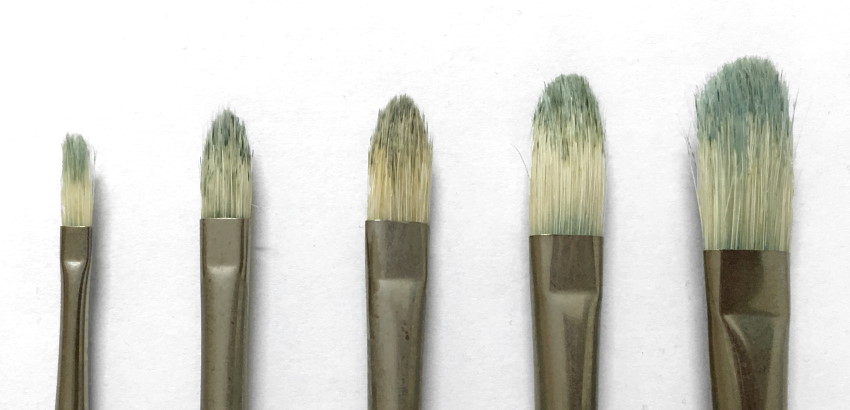 Filbert bristle brushes
Filbert bristle brushes
Round:
Round brushes are usually used for delicate work and for details, though they also come in large sizes.
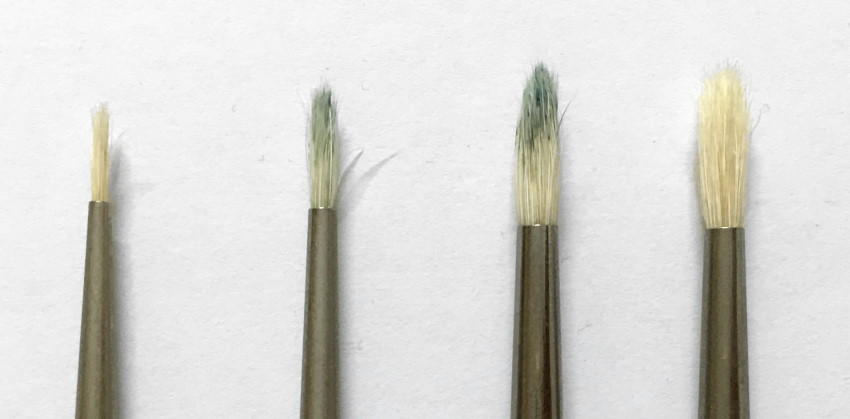 Round bristle brushes
Round bristle brushes
Flat:
The flat brushes are suitable for accuracy in detail (especially a flat brush made of synthetic hair) and for covering large areas.
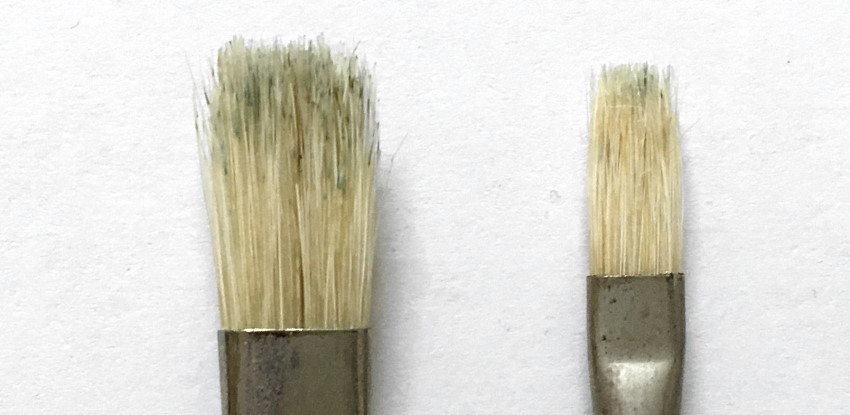 Flat bristle brushes
Flat bristle brushes
Bright:
Bright, which is a short flat brush, is an excellent brush for applying or moving oil paint.
Because it has short bristles, which bend less, it can move oil paint against the grip of the canvas and fill large areas fast.
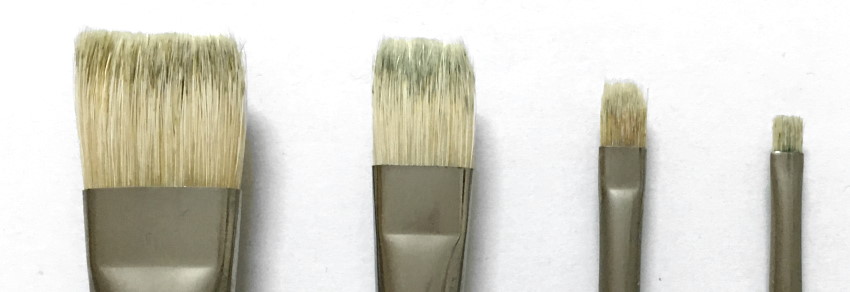 Bright bristle brushes
Bright bristle brushes
Fan:
Fan brush can be used for painting grass, hair and fur, removing brushstrokes and filling large areas.
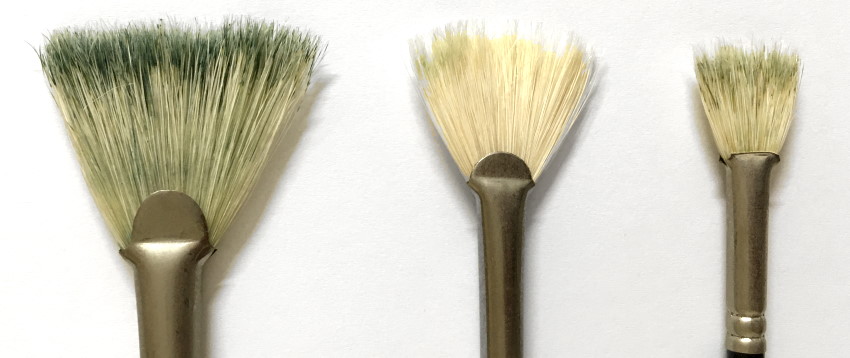 Fan bristle brushes
Fan bristle brushes
In the next example, I used a fan brush for painting the grass:
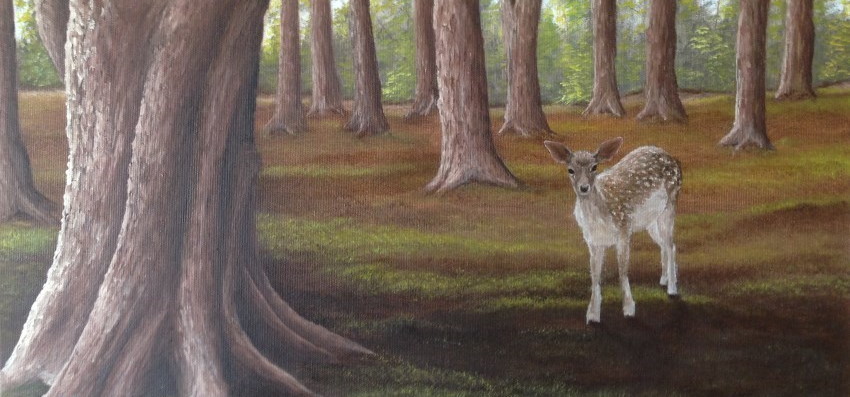 Grass with fan brush
Grass with fan brush
Large Flat:
Large flat brushes come in different sizes and for different purposes, depending on the type of hair.
For painting a large area, for example, the sky or for painting the bottom layer (underpainting), hog bristle brushes are excellent.
By using them gently, they can remove brushstrokes and create a smooth surface.
For extra gentle smoothing or blending, brushes with soft hair are better. Goat hair is a good example.
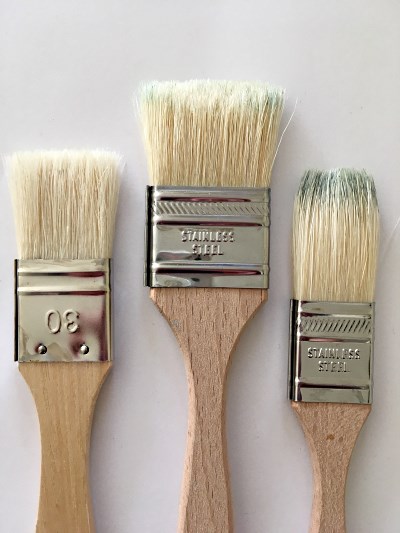 Hog bristle, large flat
Hog bristle, large flat
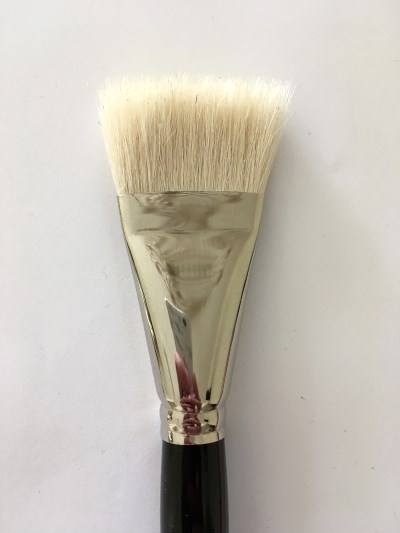 Goat blender brush
Goat blender brush
Synthetic Brushes
Synthetic brushes come in all types.
Top brands offer a variety of synthetic hair for different tasks and painting styles.
Flat synthetic:
A synthetic flat brush is one of the most versatile and important brushes for precision and for working on small details.
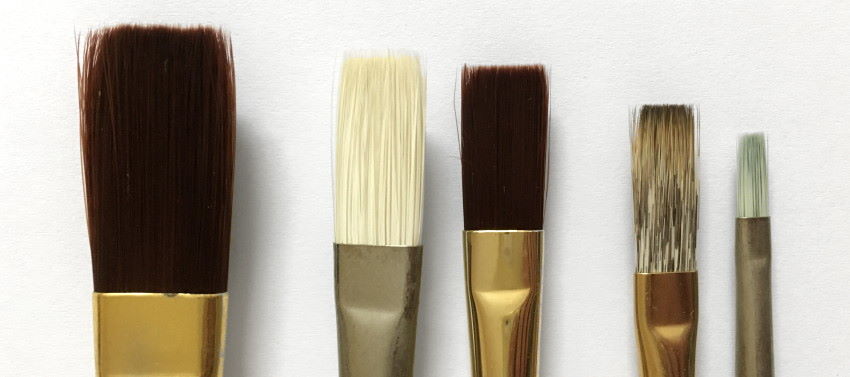 Flat synthetic brushes
Flat synthetic brushes
It is excellent for structures and other objects with clear, sharp edges.
Suitable for painting tree trunks, leaves (by using the corner of the brush, which has a triangular shape), mountains, rocks and in general for landscape and cityscape paintings.
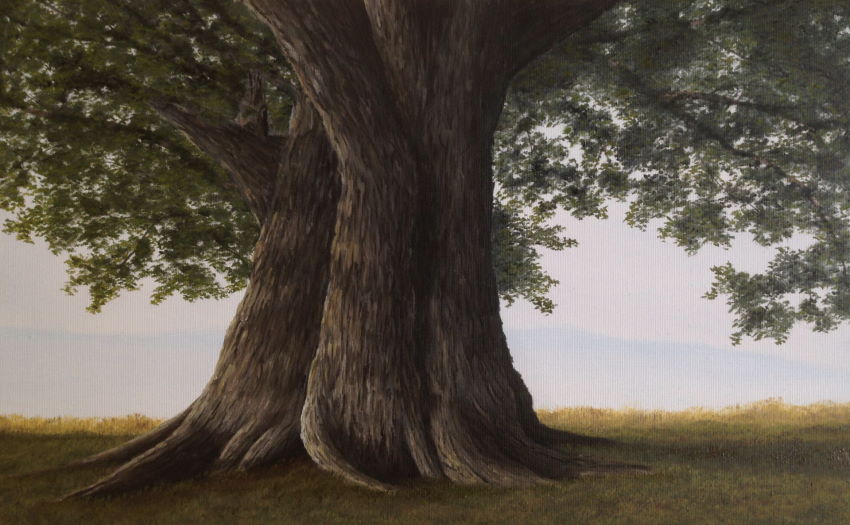 Painting with flat synthetic
Painting with flat synthetic
To find the right color and the right brightness value, I create color charts.
I use a flat synthetic brush for that.
 Oil paint mixed with white
Oil paint mixed with white
Round synthetic:
A small, round brush from synthetic hair is great for small, precise details.
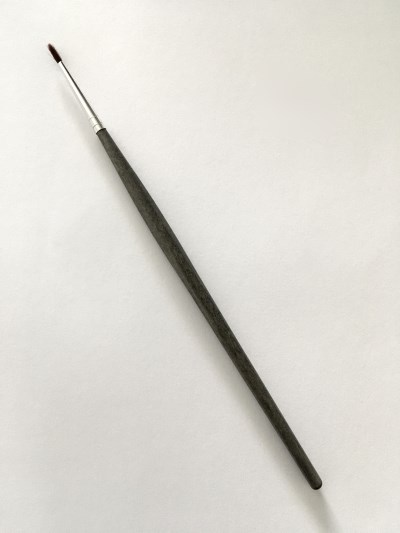 Short-handle round brush
Short-handle round brush
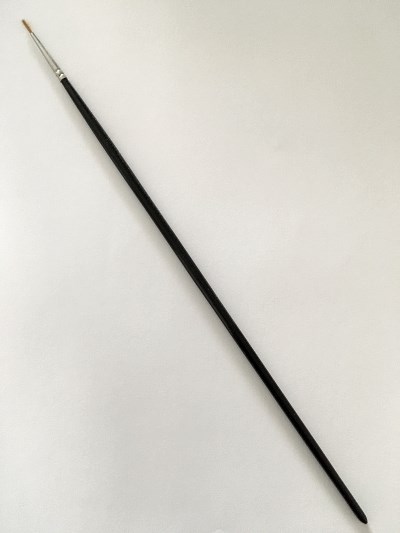 Long-handled round brush
Long-handled round brush
Liner and Rigger:
Liner and rigger brushes are thin brushes with very long bristles.
They create fine details. The length of the bristles holds a large amount of paint, therefore allowing the creation of long lines with one brush stroke.
Liner brush is good for painting grass, branches of trees, ropes and fences.
The use of this brush is by mixing oil paints with thinner or linseed oil in order to ensure a smooth flow of the brush and to create extra fine lines.
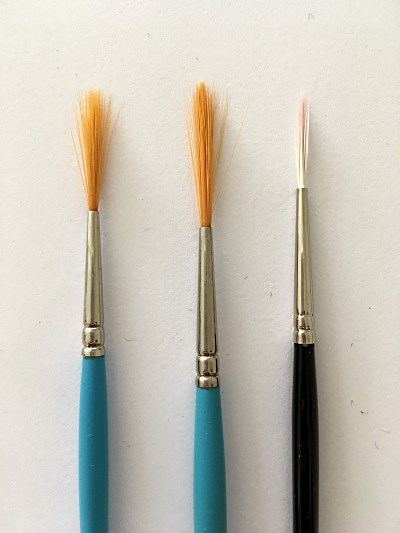 Synthetic liner brush
Synthetic liner brush
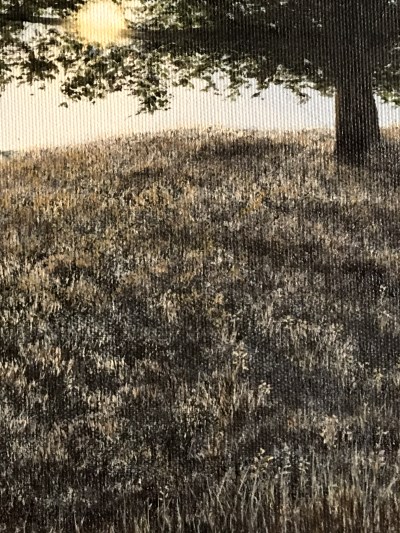 Grass with a liner brush
Grass with a liner brush
Angular brushes:
Angular brushes are particularly versatile and allow the creation of precise details, fill large areas or create unique brushstrokes.
Angular brushes come with different angles and different hair lengths, and therefore with different names such as angular, dagger, sword, etc.
 Synthetic dagger brush
Synthetic dagger brush
 Synthetic sword brush
Synthetic sword brush
Soft brushes:
The mop brush is excellent for blending and removing brushstrokes. Use is gently, as if "hovering" over the canvas.
There are many types of brushes with soft synthetic hair for smoothing, blending, varnishing, or glazing.
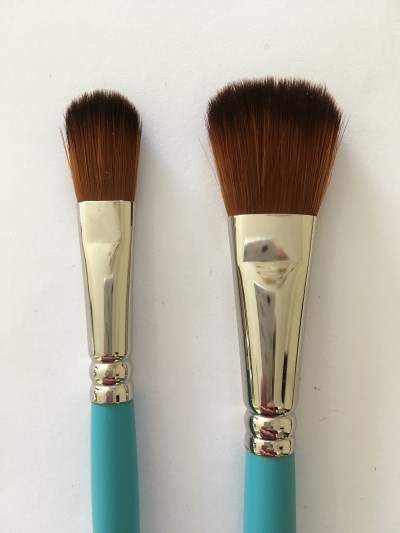 Synthetic mop brush
Synthetic mop brush
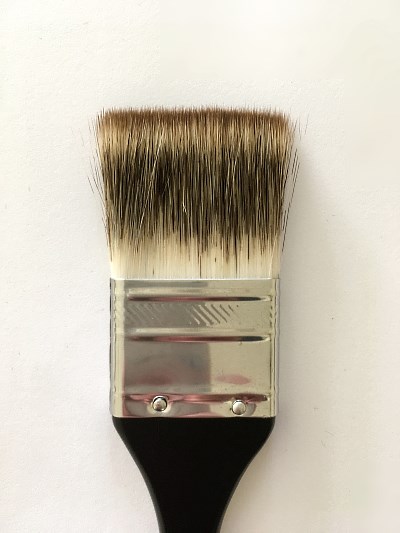 Soft blender brush
Soft blender brush
Synthetic fan brushes:
Another brush for gentle smoothing of brushstrokes is a synthetic fan brush.
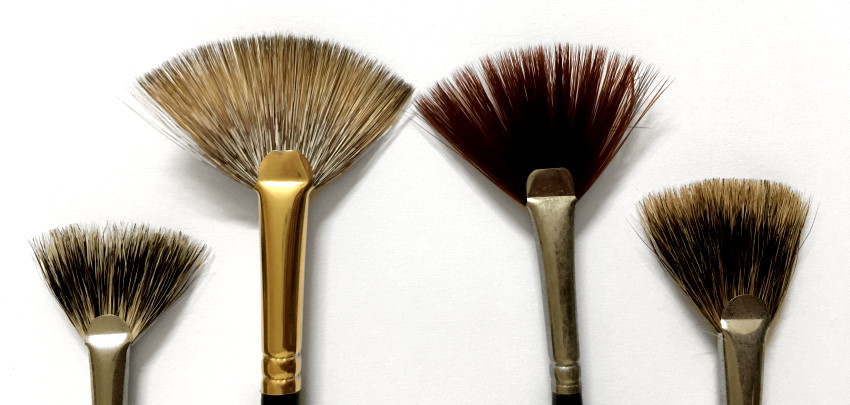 Synthetic fan brushes
Synthetic fan brushes
Brush Size Explained
Paintbrushes come in different sizes. Different brands use different numbers for the size of brushes.
Therefore, it is better to look at the brush size in centimeters or inches rather than the number written on the brush.
The numbers are usually 0, 1, 2, 3, 4, etc.
Numbers smaller than 0 are written like that: 00, 000, 0000, etc. Alternatively, in short: 2/0, 3/0, 4/0, etc.
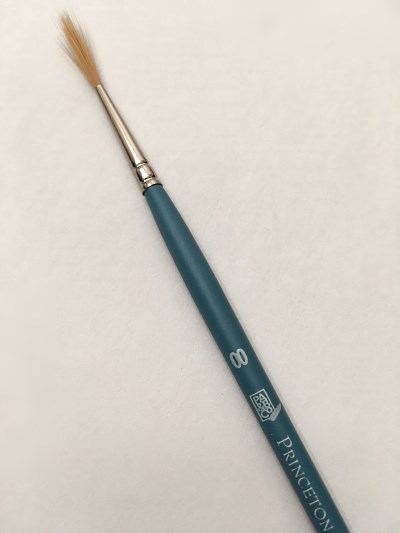 Paintbrush size 00
Paintbrush size 00
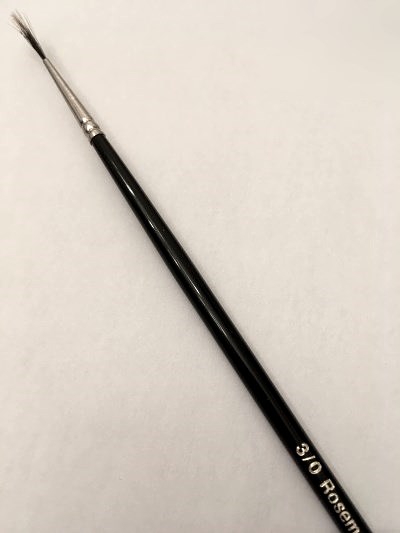 Paintbrush size 3/0
Paintbrush size 3/0
Brush Handle
Paintbrushes have long or short handles. Typically, for oil painting, the handle is long, while for watercolor painting, it is short.
A long handle allows the painter to keep distance from the canvas while painting, making it easy to see the big picture.
When painting realism, it is sometimes necessary to get closer to the canvas in order to paint small details.
Therefore, to gain better control during painting and to avoid harming the eyes from the tip of the brush handle, it is advisable to use a short-handled brush.
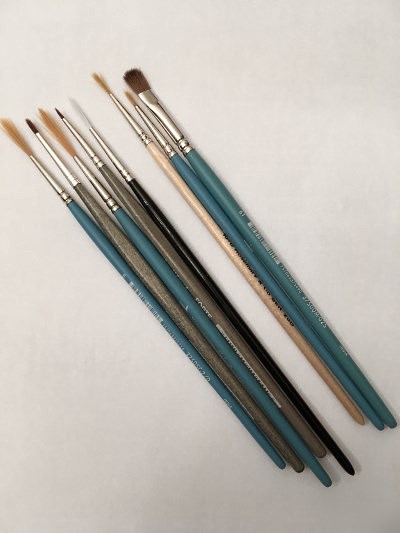 Brushes with short handle
Brushes with short handle
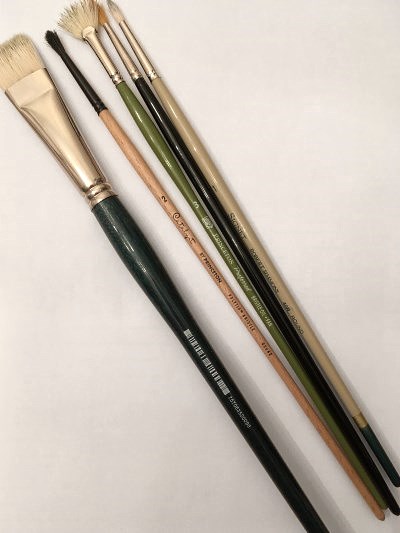 Brushes with long handle
Brushes with long handle
To paint realism, I recommend reading my article about the 8 key factors for painting realism.
Recommended Brands
For any craft, having the right tools for the job can be helpful.
Here is a list of my favorite brands for oil painting:
- Rosemary and Co
- Princeton
- Robert Simmons - Signet by Daler Rowney
- Da Vinci
Palette Knife
A palette knife or a painting knife is a tool designed to mix oil paints on an artist's palette but can also be used for painting.
Usually, the blade of palette knives is flexible.
You can mix oil paint with a paintbrush or a palette knife; it is a matter of personal preference and the type of task.
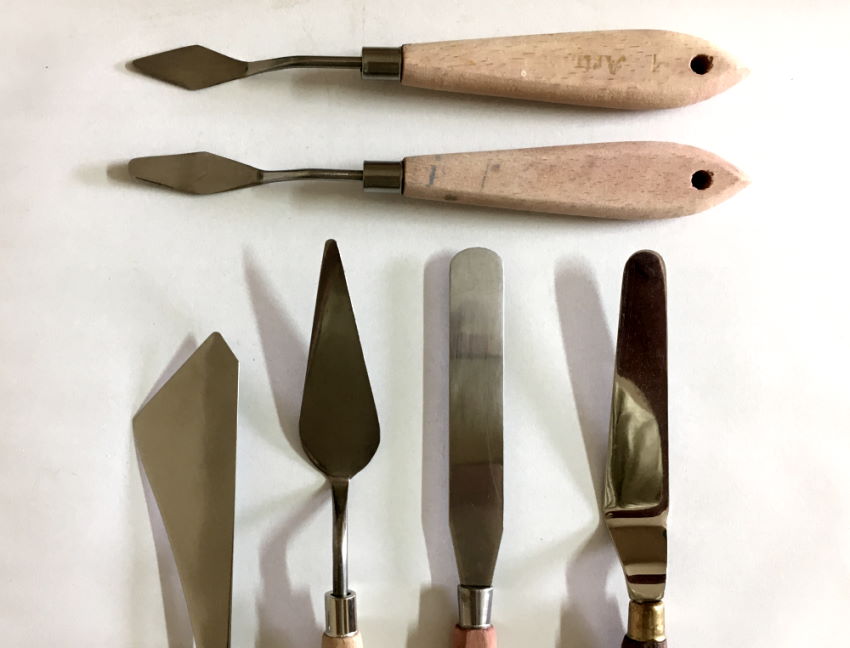 Palette Knives
Palette Knives
Remember:
A palette knife is easy to clean after mixing colors, while a paintbrush takes time to clean.
Therefore, when mixing colors in advance, I recommend using a palette knife.
I prefer small palette knives.
Summary & Tips
Choosing the type of paintbrush is a matter of personal preference and the painter's painting style.
Old brushes:
The bristles of brushes split with time. Old brushes have an advantage in creating randomness, so it is good to keep them for specific tasks, especially for texture.
Here is my guide on texture drawing.
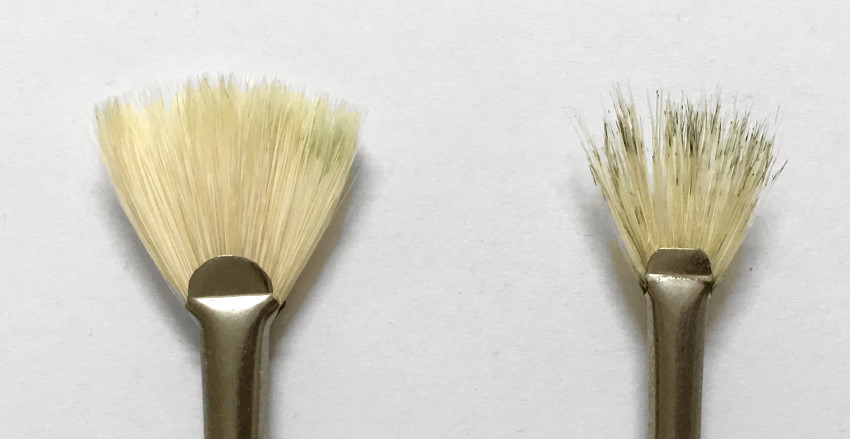 New vs. used
New vs. used
For precision, I cut or tear off the hairs that split.
In addition, it is possible to cut some brush hairs and create a new brush structure as needed.
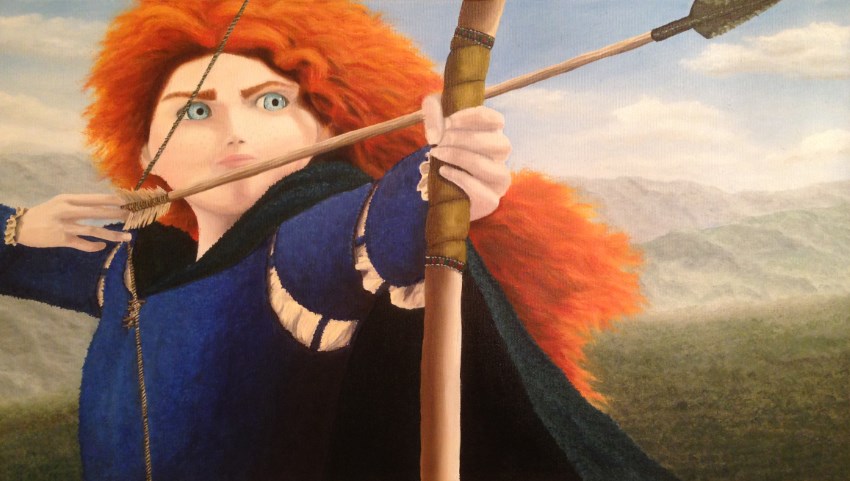 I used an old hog fan brush for Merida's hair
I used an old hog fan brush for Merida's hair
How to use brushes with paint:
Dipping a paintbrush in oil paint helps to apply a thick layer of paint on the canvas.
When painting realism, use a little amount of paint at the tip of the brush.
In addition, when trying to clean a paintbrush, it is easier when the paint does not reach the ferrule (the structure that holds the bristles together).
If oil paint enters the ferrule (and is not cleaned thoroughly), it hardens inside the ferrule and ruins the brush.
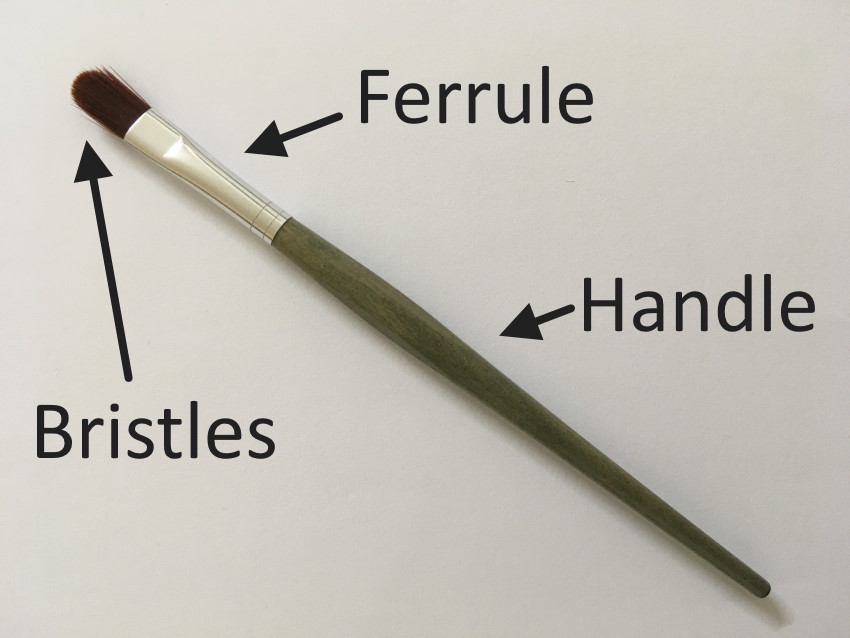 Brush structure
Brush structure
For tips on cleaning paintbrushes and helpful oil painting materials, read my guide for oil painting supplies for beginners.
How to store brushes:
For protecting the bristles, dry the brush (after cleaning) while the bristles are facing up.
If a paintbrush is facing down and leaning on its bristles, the bristles bend, and their shape will be ruined.
When completely dry, I keep them in a case designed for brushes.
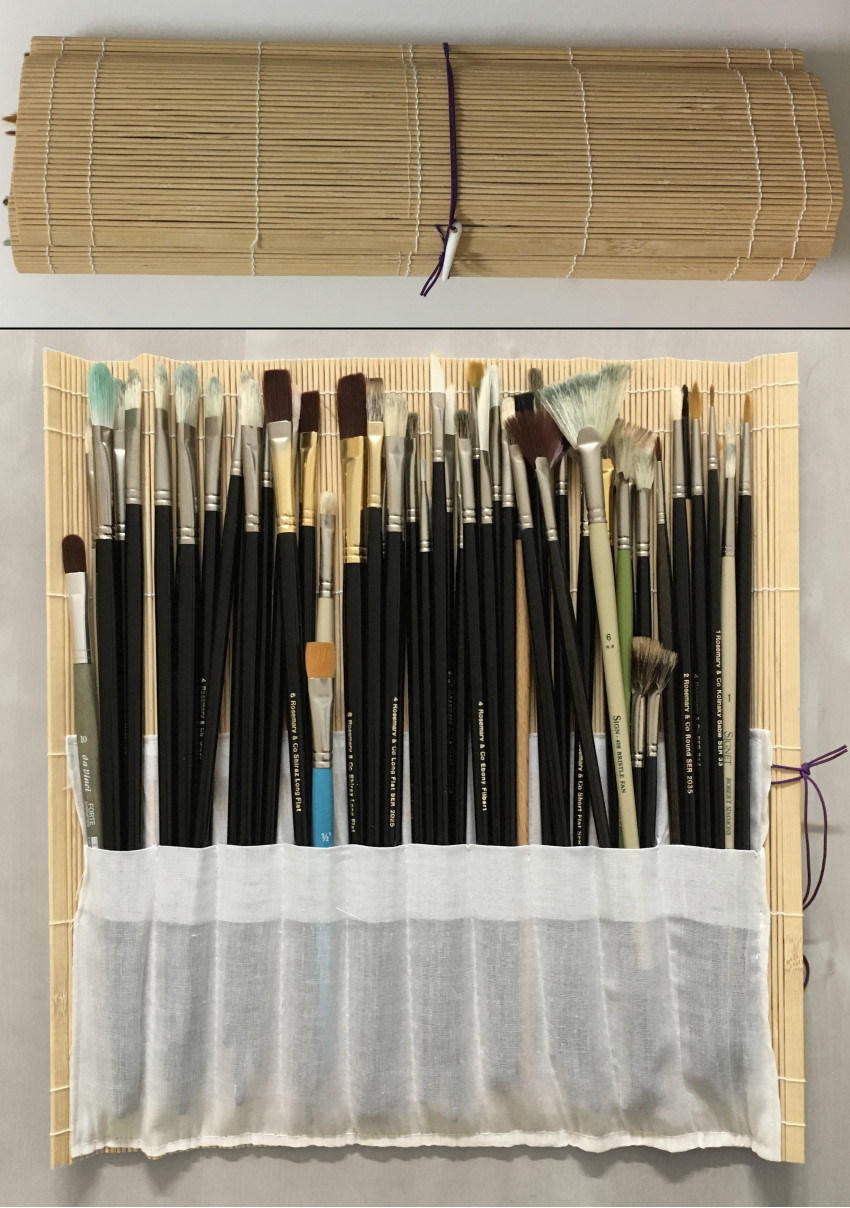 Paint brushes case
Paint brushes case
For paint brushes to do their magic, first you need to know how to mix colors.
Hereby, a guide I wrote about oil paint mixing & the color wheel.
For many tutorials, I created a list of recommended painting instructors on YouTube.